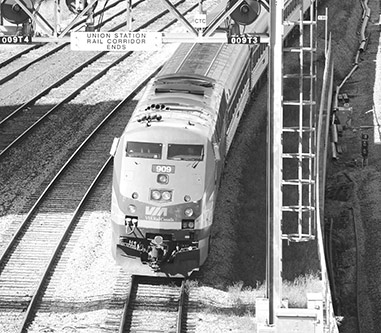New rail way will speed through London
 CREDIT: MICHELINEDESGROSEILLIERS/ ISTOCK EDITORIAL /THINKSTOCK
CREDIT: MICHELINEDESGROSEILLIERS/ ISTOCK EDITORIAL /THINKSTOCKVIA Rail might be a thing of the past with news of high-speed rail motoring from Windsor to Toronto.
The Ministry of Transportation announced December 5 that the province will be moving forward with building a high-speed rail line, which will connect Windsor, London, Kitchener-Waterloo and Toronto.
In the press release, the government states that the rail line will “improve travel options, reduce travel time and create jobs by getting people moving.”
The railway is part of a 10-year, $29 billion transit and infrastructure plan called Moving Ontario Forward.
Mayor Matt Brown feels nothing but excitement about the upcoming project.
“This is fantastic news for London,” he said in the release. “Highspeed rail will benefit many vital economic sectors in London. We look forward to working with the province on this initiative.”
Ajay Woozageer, Senior Bilingual Media Liaison Officer for the Ministry says the build will support the economy.
“High-speed rail would support the economy by helping to connect knowledge and innovation hubs to international gateways, including Pearson Airport,” he said in an email.
“By examining options for a new Windsor-Toronto high-speed rail corridor, the Ministry of Transportation would evaluate state-of-theart transportation technology for future investments to improve travel times and support growth in these innovation hubs.”
Woozageer says this new railway – while not directly involved with VIA Rail – will increase ridership within other communities.
“VIA Rail provides inter-city regional rail services in Ontario,” he said. “This project will be evaluating high-speed rail, not conventional passenger rail services.”
“Potential ridership from different communities [like Kitchener- Waterloo] in the study area will be evaluated to help determine potential routes and station locations.”
Woozageer says the railway should bring benefits to Ontario, including:
• Enhanced business competitiveness and productivity
• Faster travel times
• Increased transportation mode choices
• Reduced GHG emissions associated with interregional travel
• New transportation technologies, which provide economic development opportunities for Ontario (e.g. manufacture of rolling stock, etc.)
• Supports knowledge-based economic development opportunities in the Toronto to Windsor corridor
• First step in the development of a potential HSR network in Ontario that may eventually connect to neighbouring provinces and states
The high-speed railway will cut down travel times indeed. At the present, travel from Windsor to Toronto takes just over four hours.
Woozageer explained the difference high-speed will make.
“Conventional rail (e.g. VIA Rail) typically operates at speeds between 100 km/h and 160 km/h and has more frequent stops,” he said. “High-speed rail operates at speeds over 200 km/r.”
London being one of the stops, Londoners can look forward to being involved in some way during the process.
“The City of London is the largest southwestern Ontario municipality and a significant innovation hub in the province,” he said. “We want to ensure we are making it easier for both workers and students to travel. Investing in public transportation is part of the economic plan for Ontario.”
“The province will begin to consult with First Nations and start discussions in the New Year with a wide variety of groups, including municipal partners and business on how best to move forward to ensure they are engaged early in process. There will be several opportunities for the public and other stakeholders to become engaged in the project throughout the environmental assessment process.”
Building of the railway will increase job opportunities in the London area, though a precise number has yet to be determined.
“Building high speed rail is part of the government’s long-term transit and infrastructure plan for Ontario,” said Woozageer. “High-speed rail will support knowledge-based economic development and job growth in the innovation centres throughout the Toronto to Windsor corridor, as well as provide new jobs to support the construction and operation of the high speed rail service, and the manufacture of rolling stock.”













